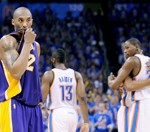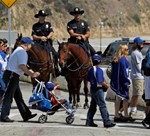We recently spoke with Robb Silverstein who was writing a paper on Fan Violence for a class called “Sports in America”. Robb is 4th year student at San Jose State studying Public Relations with a minor in Business Management. He is a huge sports fan who has always had a passion for sports.
Robb was kind enough to include Fans Against Violence in his paper and allow us to share it with you.
Fan Violence in Sport
~By Robb Silverstein – May 14, 2012
 An issue that has been a constant in North American sport is the problem of fan violence. This has been an issue particularly in contact sports such as football, hockey and baseball. Some of the main issues surrounding fan violence include team identification, consumption of alcohol at arena’s, the bad economy and the moral panic of the media just to name a few. As the text points out the word fan is short for fanatic. As we all know fanatics are not usually a good thing. Fans are flocking to stadiums and arenas and setting attendance records and according to an article on fan violence by USA today, NFL stadiums averaged 25 ejections and 3 arrests per week (Klemko,2011). Football is not the only sport that has a major problem with this. The NHL and MLB have also run into problems with violence. Pro sports aren’t the only culprit though. According to the National Summit on Civil Disturbances, sporting events account for over 25 percent of event disturbances on college campuses (Gordon et all 2005).
An issue that has been a constant in North American sport is the problem of fan violence. This has been an issue particularly in contact sports such as football, hockey and baseball. Some of the main issues surrounding fan violence include team identification, consumption of alcohol at arena’s, the bad economy and the moral panic of the media just to name a few. As the text points out the word fan is short for fanatic. As we all know fanatics are not usually a good thing. Fans are flocking to stadiums and arenas and setting attendance records and according to an article on fan violence by USA today, NFL stadiums averaged 25 ejections and 3 arrests per week (Klemko,2011). Football is not the only sport that has a major problem with this. The NHL and MLB have also run into problems with violence. Pro sports aren’t the only culprit though. According to the National Summit on Civil Disturbances, sporting events account for over 25 percent of event disturbances on college campuses (Gordon et all 2005).
In the following paper I will present reasons why this violence is happening. This will occur through tons of research on the specific issues, which lead to fan violence. Sources that will be used include scholarly journals, newspaper articles, and the class text. Books and interviews with fan violence awareness org’s. All of the above will examine the problem and specifically North American sport fan violence.
The first issue that I will be discussing in regards to fan violence is team identification. According to a piece in Asian Journal of Management and Humanity Sciences, team identification is defined as “the personal commitment and emotional involvement customers have with a sport team.” (Shiue Gau et all 2009).The same piece talks about the social identity theory, which relates to team identification and says that identifying with a group enhances a persons self esteem because of the personal meaning and value that comes from belonging to or associating with a particular group. As Paul Greenwood, who published a study on sport fan team identification for his masters thesis at North Carolina State points out, this identification can take an ugly turn when the team you identify with loses. Greenwood says that “after witnessing a loss, fans with high identification levels look for external attributes in an effort to protect their self-esteem, and aggression is generally directed at officials and opposing players and/or fans which can lead to spectator violence.” (Greenwood,2001).
Winning and losing plays a big role in fan violence, to think of it in a very simple way. People are happy when their team wins. The opposite holds true when their team loses. While riots still happen when wins occur, the actual issue of fan vs. fan violence usually has to deal with who wins and loses. Jerry Middleton Lewis touches on this in his book Sports Fan Violence in North America. Lewis says that that the victory experience is the ultimate form of sports fan identification. He also adds that the typical violent fan wants to be part of the victory, yet they cant do any of the things that they see their favorite players doing on the court. However, they do know how to be violent. Violence gives some fans the ability to feel almost as if they are doing their part for the team) Middleton Lewis, 2001).
Celebratory violence can also be a factor to team identification. Goodtherapy.org, a leading therapist organization, wrote a piece on how celebratory violence increases fan identification, describes this as the celebration of a teams victory and how the results are destruction of property through rioting. The study found that people who had participated in this type of behavior had higher fan identification than those who had not (Goodtherapy.org,2011).
Besides team identification, another factor that leads to fan violence is the over consumption of alcohol at sporting events. The class text highlights this in the section on fan violence. The text says that a way to limit fan violence would be to decreases the amount of alcohol sold at games, that seems unlikely to happen so for now it is important to understand how much of a problem alcohol is when it comes to fan violence. (Eitzen & Sage, 2009)
To do just that, I start with presenting an article from the League of Fans. The League of Fans is a sports reform project founded by Ralph Nader to encourage social & civic responsibility in the sports industry. In the article, Ken Reed, states that alcohol is usually the number one reason for fan violence. “Alcohol is by far the biggest problem when it comes to fan safety at stadiums and arenas. The vast majority of these incidents involve alcohol abuse.” (Reed,2011) Reed goes on to say that it all starts even before the game starts in the parking lot and teams and leagues.
In terms of specific cases, Brendan McCarthy wrote an article for the Times-Picayune, New Orleans main newspaper, on the problem of fan violence and just how bad it is becoming. In the piece he mentions the recent sexual assault of an unconscious Louisiana State university fan by an Alabama fan following the championship between those two teams. In the article he interviews Jason Lanter, assistant professor of psychology at Kutztown University. Lanter says that alcohol and the elation of winning gives fans the idea that they have the right to miss-behave. Both teams’ fans were intoxicated and while you cant only blame alcohol, it clearly made things a lot worse in this case (McCarthy,2012).
Besides the issues of team identification and violence, another factor for fan violence is the economy. I interviewed Kathy Samoun, the founder of fansagainstviolence.org. Samoun started the organization after the Brian Stow attack at Dodger Stadium and the 49ers-Raiders preseason game violence, to raise awareness for a problem that is as big as ever. In the interview Samoun says that people need something to feel hopeful about, and sports like football, are one thing many people can relate to even if they are struggling financially. She pointed out that there is an increase in violence when teams lose and the horrible economy just puts an even stronger emphasis on the desire to win.(Samoun,2012). The USA Today article mentioned earlier also touched on this. In the article Charles Williams a professor of Psychology at Drexel University says that people are looking to escape the lack of money and jobs by going to sporting events. The combination of the bad economy and rising ticket prices is not a good one when it comes to the impact of violence at sporting events. (Klemko,2011)
The 2nd factor that that Samoun discussed was the media’s role in all of this. One would think that media coverage and exposure to the issue would be a good thing, but Samoun argued that is not the case. She said that it’s a double edge sword. People are so on edge now when they attend a sporting event, afraid at the first “boo” from someone that they are reacting quicker out of fear that they will also be attacked. Samoun and her organization aren’t alone in this line of thinking. Russell Ward Jr. published a study in Science Direct that agreed. It compared and contrasted the idea of social problem vs. moral panic. Moral panics, which are “righteous appeals from the media that something must be done to extinguish a social menace.” (Ward,2012) Ward described examples of fan violence coverage by the media as over the top and exaggerates and makes the problem much worse. His main point was that this raises emotions when the best approach would be actual thinking.
Sporting events are supposed to be fun. Fan violence has ruined games for tons of people. As noted earlier, some reform actions are under way. One particular idea that would be effective comes from California Assemblyman Mike Gatto (D-Los Angeles). According to the Sf Weekly, Gatto is drafting legislation that would ban fans from games that participated in acts of violence at sporting events. This would look similar to the no-fly list. They would also face severer jail time and a fine (Sherbert,2012).
To look at how specific teams are trying to crack down on this happening at their stadium I bring in an article in the Wall Street Journal on what the 49ers did before their playoff game verse the Giants. Earlier in the season the 49ers had had major problems with violence at games. Well for this playoff game, the article says that the 49ers handled things much differently. For one, they banned tailgating after kickoff. This obviously leads to less people becoming belligerent. The 49ers also increased security by 25 percent and let fans know the week of the game that cops would be dressed as Giants fans. This strategy ended up working considering the 49ers lost a heart-breaker and the number of incidents decreased (Carlton, 2012).
To conclude, it is important to be aware of the problem of fan violence at sporting events. It is a shame that anyone would not go to a game due to violence but you can’t blame anyone who does so, given the high number of arrests and violence at games. The media as shown, needs to do there job to not sensationalize the issue but cover it in a balanced matter. Teams have their role in this as well. As cases like the 49ers –Giants game show, if teams are organized and work to stop this it can be done. Issues like high team identification and even a bad economy don’t have to lead to violence if teams continue to strive to stop fan violence.
 Lee was initially cited a desk appearance ticket for disorderly conduct, but upon learning of the severity of Mohr’s injuries, police officials raised the charge to aggravated assault and a warrant was issued for Lee’s arrest. He was taken into custody two days following the attack and was indicted by a grand jury.
Lee was initially cited a desk appearance ticket for disorderly conduct, but upon learning of the severity of Mohr’s injuries, police officials raised the charge to aggravated assault and a warrant was issued for Lee’s arrest. He was taken into custody two days following the attack and was indicted by a grand jury.

